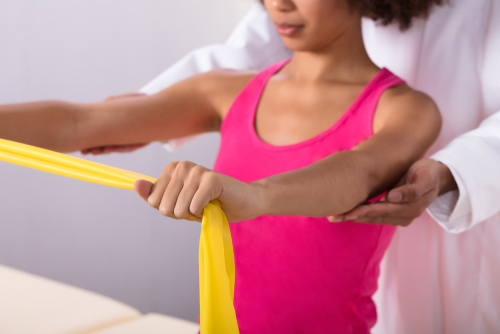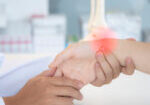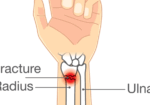Tips for Getting Prepared for hand therapy as a new grad or a Level II Fieldwork Everything you need to know in hand therapy starts with the upper extremity anatomy. Here is a quick checklist to review and hopefully help get you started in your new hand therapy setting.
By: Tristany Hightower

I suggest, as a new grad or student, reviewing the following.
Anatomy – Everything you need to know in hand therapy starts with the upper extremity anatomy.
- Review muscles by action (shoulder flexion, elbow extension, wrist flexion, etc).
- Review brachial plexus and innervations of muscles of UE
- Wound Healing/Bone Healing
- Timeline of healing
Billing
Billing may be specific to your sight and the business model, but knowing a few of these billing items can be helpful.
Review what items can be billed for under each category:
- Therapeutic exercise
- Therapeutic activity
- Self-Care
- Neuromuscular Re-Education
- Manual Therapy
Common Upper Extremity Conditions
Understanding the anatomy behind non-complex UE conditions is very helpful
- Trigger finger
- Carpal Tunnel
- Cubital Tunnel
- Distal Radius Fracture
Standardized Assessments to Review
Students need to know standardized assessments and know how to do them correctly. We have included some of the most popular ones we use in the clinic.
- Grip/Pinch Strength
- ROM using goniometer
- Monofilament testing

Special Tests
- Have a resource of special tests for the shoulder, elbow, wrist, and hand to have a point of reference for working in the clinic
- It is not necessary to memorize the special tests, but have the resource easily accessible for when an initial evaluation might have needed a special test.
Studying outside of Clinic
- Review patients who you are seeing the following day to get an idea of the diagnoses that you will be seeing
- Review the diagnosis to understand the anatomy.
- Consider having a list of exercises/activities that each patient does based on the diagnosis category
- Create treatment plans to review with the clinical instructor or supervisor each morning
Biggest Tips
- Have resources easily accessible to reference as necessary. Therapy for hand therapy and the upper extremity is very complex and requires consistent learning. I had to be okay with not knowing the answers to every question, but I always have the resources to answer the questions my CI asked with assistance.
Helpful Resources
- The ASHT Manual for Clinical Educators (free)
- ASHT Student Workbook (free)
- Rehabilitation of the Hand (found 6th edition online for free)
- The Hand: Examination and Diagnosis 3rd Edition (found a used edition for 10 dollars)
In summary, being a student or new grad in the field of hand therapy can bring many challenges, but the effort in learning and understanding can be very rewarding. It is a field that requires lifelong learning, which brings much fullfillment to one’s career.
More To Read
Volkmann’s Contracture
Written by Melissa Miller Introduction Volkmann’s contracture is a rare condition that occurs after injury to the elbow and upper arm, typically from a crush injury. This condition can occur when acute compartment syndrome is left untreated. If unrecognized, Volkmann’s contracture can lead to a permanent deformity in the hand and forearm. Hand therapists are…
Read MoreTitle: Understanding De Quervain’s Pathology: A Comprehensive Exploration of Special Tests
Understanding De Quervain’s Pathology: A Comprehensive Exploration of Special Tests By: Miranda Materi De Quervain’s and Special Tests De Quervain’s tenosynovitis is a condition characterized by inflammation of the tendons on the thumb side of the wrist, causing pain and discomfort. These tendons include Abductor Pollicis Longus (APL) and Extensor Pollicis Brevis as they pass through…
Read MoreIs therapy needed after a distal radius fracture?
Coughlin T, Norrish AR, Scammell BE, Matthews PA, Nightingale J, Ollivere BJ. Comparison of rehabilitation interventions in nonoperatively treated distal radius fractures: a randomized controlled trial of effectiveness. Bone Joint J. 2021Jun;103-B(6):1033-1039. doi: 10.1302/0301-620X.103B.BJJ-2020-2026.R1.Epub 2021 Apr 30. PMID: 33926211. The Skinny: Individuals with distal radius fractures are very common in the hand therapy world. This…
Read MoreCommon Median Nerve Injuries
Common Median Nerve Injuries By: Madison Mott Did you know!? Aside from the most common upper extremity nerve compression, carpal tunnel syndrome (CTS), there are several additional median nerve injuries. Pronator SyndromeCompression of the median nerve between the two heads of pronator teres. Result of recurrent, forceful gripping, forearm rotation, or elbow flexion. Signs include…
Read MoreSign-up to Get Updates Straight to Your Inbox!
Sign up with us and we will send you regular blog posts on everything hand therapy, notices every time we upload new videos and tutorials, along with handout, protocols, and other useful information.






